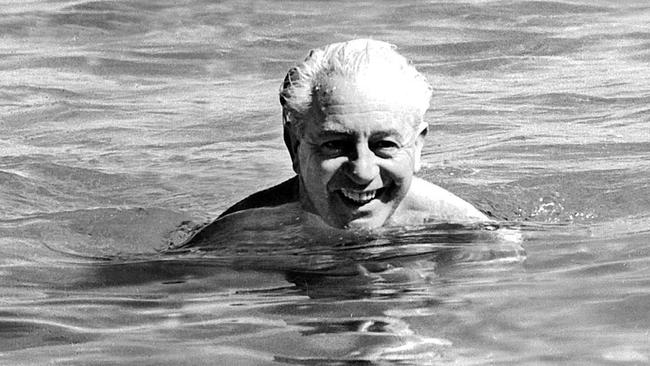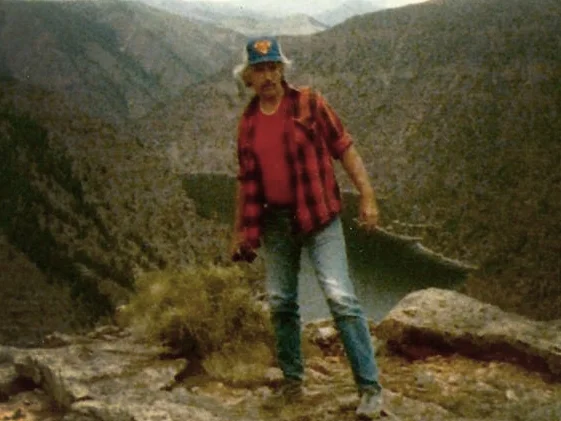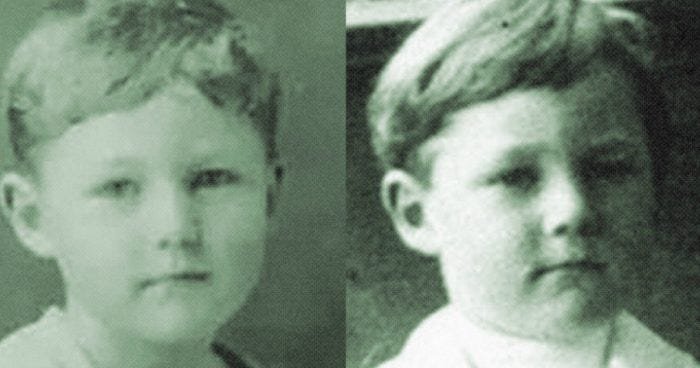Imagine inventing something so groundbreaking that it forever changed the world as everyone knew it. Then imagine nobody ever knowing it was you who created it.
It would be like Alexander Graham Bell not receiving any credit for inventing the telephone or Thomas Edison not being credited for inventing the lightbulb.
For French inventor Louis Le Prince, that’s what happened.


Posthumously, he’s been named “The Godfather of Cinema,” yet he remains a relatively unknown figure in the archives of history. Many people are unfamiliar with Le Prince’s name, let alone his accomplishment of inventing the early motion picture camera.
Without his prototype, cinema as we know it today may not exist.
However, Le Prince’s life was marred with misfortune and mystery, and he would vanish before presenting his invention to the world. Although his story is intriguing, it leaves one big question mark: what happened to Louis Le Prince?
Louis’s Early Years
Le Prince was born in Metz, France, in 1841. Little is known about his childhood, though his father was reportedly away from the family home with the French Army, meaning Le Prince sought his father figures elsewhere. One of whom was Louis Daguerre, an artist and photographer.
This relationship may have inspired a young Le Prince to take a great interest in art. As he grew older, he developed a passion for physics, too, and as an adult, he combined his interests to inspire his inventions.
As a young adult, Le Prince decided to delve deeper into his passions and studied art, physics, and chemistry at university level.
Shortly thereafter, he moved to Leeds, England, where he met Elizabeth Whitley, whom he quickly married. Together, they built a successful art school, the Leeds Technical School of Art.
The young couple, both passionate about art, moved to New York to continue careers in the subject.
Elizabeth was a teacher by trade, and Le Prince was an inventor at heart. Their skill sets combined saw them build a successful roster of artists whom they managed and mentored. With the guidance of their teachers, Le Prince’s students specialized in panoramic paintings.
These wide, encompassing paintings were relatively unique at the time. They inspired Le Prince to design a device that captured moving images. He had a contraption of some kind pictured in his head; the hard part was getting the components to align to make it work.
Building the World’s First Motion Picture Camera
In the mid-1880s, Le Prince doubled down on creating a motion-capturing device. Naturally, this came with many failed attempts.
It famously took Thomas Edison over 1,000 attempts to get the lightbulb’s invention right, and Le Prince gave his invention of the motion picture camera just as much commitment. For years, from idea to inception, he tried and failed many times with numerous designs.
Through his experiments, Le Prince eventually built a camera that used 16 different lenses. This unique design was the first invention he patented, although it wasn’t quite the motion capturing device he’d imagined.

Sure enough, it captured motion, but it was far from perfect. Each lens took its snapshot of the view from separate angles, meaning the “motion” jumped erratically from image to image, lacking the smoothness Le Prince envisioned.
However, after much work, Le Prince eventually created a single-lens camera. By this point, it was 1888, and he’d moved back from the States to Leeds, England. He filmed his (and the world’s) first-ever motion picture here.
It was named the “Roundhay Garden Scene,” and it was exactly as titled: people enjoying themselves in a garden. It was 2.11 seconds long.
It may not sound much by today’s standards, but it was groundbreaking at the time. Le Prince would follow up with his second “movie,” simply titled “Leeds Bridge.” Again, it depicted exactly what the title suggested, Leeds Bridge, with traffic moving by slowly.
This was almost a decade before the “first” short film debuted years later (by the Lumière brothers, showing a train pulling into La Ciotat Station.)
It wasn’t just Le Prince who was working hard to produce the world’s first motion picture at this time. Thomas Edison was hot on his heels, and the Lumière brothers were also working on their prototypes at the time.
Still, it seemed Le Prince had won the race when he announced an exhibition to take place in New York in September 1890. In this exhibit, he would show the world the first motion pictures.
However, Le Prince would never make it to his own show.
Louis Le Prince Vanishes
It’s a question that’s been asked for over 130 years: what happened to Louis Le Prince?
On the day before his exhibit, Le Prince’s brother, Albert, dropped him off at the train station. Le Prince carried everything he’d need to present the exhibit, including his suitcase carrying the precious patents.
As far as Albert was concerned, he dropped his brother at the station and waved him off as the train sped away.
What’s strange about this is nobody on the train remembers seeing Le Prince.
When the inventor failed to show up at his own exhibit, the police became involved, and their investigation began with officers speaking to other passengers on the train Le Prince was allegedly on. Not one of them could say they saw him.
It wasn’t like he was easily missed; he towered at 6 feet 4 inches, had distinctive facial hair, and carried lots of unique luggage. Still, nobody noticed this.
Naturally, this caused the police to wonder if Le Prince had even boarded the train. If not, Albert’s statement would be untrue. Why would Albert lie about waving his brother off?
It was speculated that Albert killed Le Prince so he could be the sole beneficiary of their mother’s inheritance.
This sounded like a stretch to some, particularly when it was revealed just how close the brothers had been in the years before Le Prince’s vanishing. In fact, Albert would offer up his own money to fund the search for his missing brother.
As you can imagine, when the race to invent the first motion picture camera was revealed to the public, it made Le Prince’s vanishing all the more suspicious and mysterious.
Knowing there were other inventors who had hoped to be the first person to show the moving picture to the world aroused speculation that one of his fellow inventors was to blame for his disappearance.
What helped fan the flames of this theory was Le Prince’s wife, Elizabeth, publicly saying she believed it to be true. To back her claims, of which there was no solid evidence, she said that Thomas Edison, in particular, was known to be immensely competitive.

Could this have caused him to do the unthinkable and kill Le Prince to secure his position as the inventor of the moving picture?
Elizabeth further supported these claims by pointing to Edison’s history of taking credit for others’ inventions.
In fact, it wasn’t just Elizabeth who felt this way: the Le Prince family felt so strongly that Edison was the person responsible for Le Prince’s disappearance that they took him to court over his “kidnapping” of the missing inventor.
Was Le Prince Killed For His Patent?
The Le Prince family’s case against Edison—who was by now claiming to have invented the moving picture camera—was to prove that Le Prince had indeed invented it before him.
In doing so, they could prove that Edison wanted his competitor dead so he could steal the patent and claim it as his own.
The family, specifically Le Prince’s son, Adolphe, presented evidence to support this.
The evidence was the moving picture “Roundhay Garden Scene.” In it, you can see Adolphe’s grandmother skipping in the garden. She died in 1888, and her death certificate offers irrefutable proof of this.
As a result, it meant Le Prince must have filmed the scene in, or earlier than, 1888, leading Le Prince to be granted the title of the inventor of moving pictures.
Still, it did little to prove that Edison was involved in Le Prince’s disappearance, and so his family ultimately lost their case against him.
More tragedy was to come, though.
In 1901, while in New York, Le Prince’s son was discovered dead. He had a bullet wound to the head. It was concluded that he took his own life. He was in his late twenties.
This death, much like his father’s vanishing, has been plagued with conspiracies and rumors, though the official verdict is that Adolphe’s passing was of his own doing.
Numerous theories about Le Prince remained, some of which suggested the inventor wasn’t dead or missing at all, that he chose to disappear, and that his family knew where he was.
Other rumors suggested he’d vanished so his family could claim his insurance policy, thus setting them up for life. Some hypothesize that he simply up and left without telling his family his plans, using his upcoming exhibit to throw them off the scent.
Still, he was declared dead in 1897 despite his body never being found.
Although he never quite got the recognition he deserved in life, Le Prince has been memorialized in death. A plaque commemorates him on the British Waterways building near where he shot the moving picture of Leeds Bridge.
There was also a made-for-TV movie about his life story and a documentary released detailing his inventions and subsequent vanishing.
While we don’t know what actually happened to Le Prince, we know one thing for certain: he is one of the main reasons we have cinema as we know it today.
Sources
https://www.acmi.net.au/stories-and-ideas/tragedy-louis-le-prince
https://blog.scienceandmediamuseum.org.uk/louis-le-prince-created-the-first-ever-moving-pictures
https://faroutmagazine.co.uk/louis-le-prince-the-fascinating-mystery-behind-the-inventor-of-cinema













Leave a comment